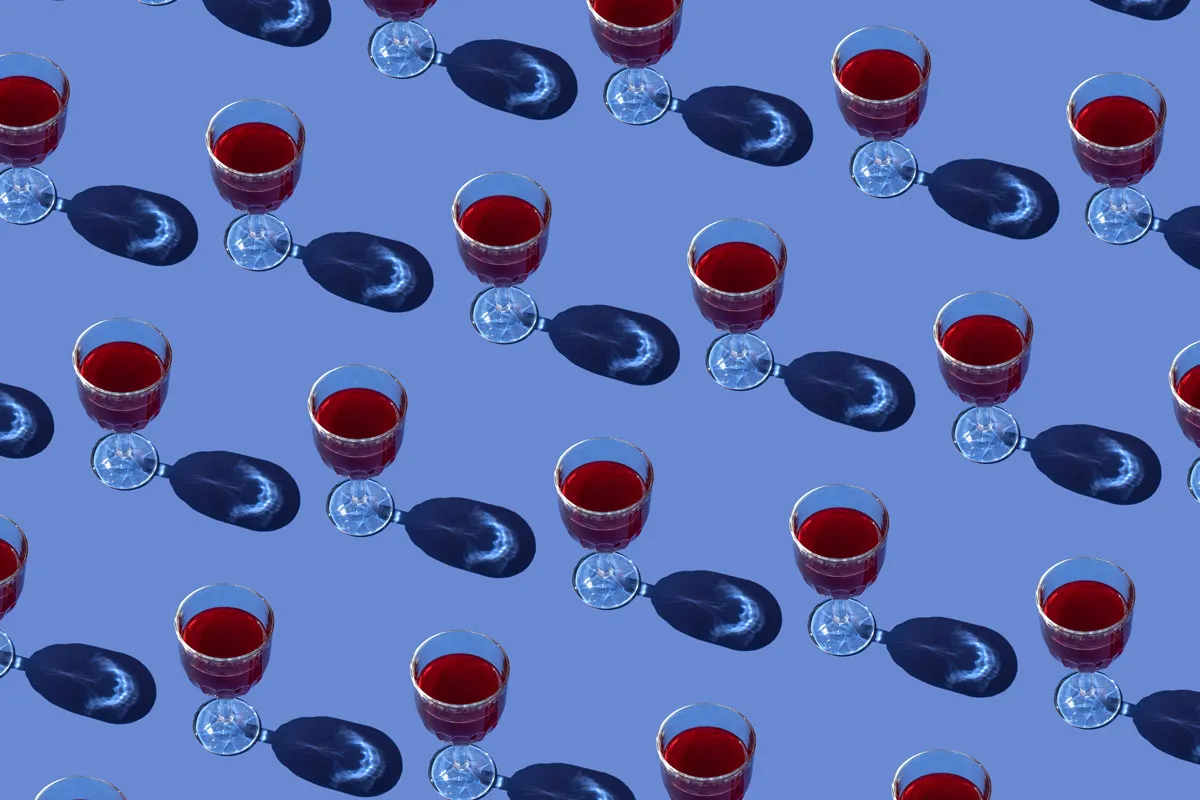Get in your 10,000 steps. Sleep eight hours. Don't drink over 14 units a week. These are just a few of the ‘essential’ health guidelines we’re supposed to live by, but who can really manage all of the above? And do these ‘commandments’ stand up to scrutiny?
Here's how the top recommended health targets actually stand up to modern science:
150 minutes of exercise a week
The NHS recommends that UK adults get 150 minutes of moderate, or 75 minutes of vigorous exercise each week.
“These recommendations are the minimum that people need to do to gain health benefits from physical activity, based on four decades of research,” says Dr Gavin Sandercock, professor of sport, rehabilitation and exercise sciences at the University of Essex.
“If you follow the recommendations, you’re about 11-15 per cent less likely to die of anything, compared to people who do nothing, and your risk of dying of a heart attack is about 20 per cent lower.”
But he says they’re a watered-down version of the first activity guidelines from 1991, which were for 150 minutes of moderate – but preferably vigorous – activity, in addition to what you already do, in bouts of at least half an hour a pop.
“The science is really strong for vigorous activity,” says Sandercock. “That doesn’t mean with the eyes popping out, it just means having a higher heart rate.
"Everything we know about exercise physiology, everything I’ve learned in the past 25 years, tells me that vigorous is best and I recommend it to anyone who is healthy enough to do it. If you want to get fitter, you have to work harder.”

In surveys on physical activity, people tend to exaggerate how much they’ve done, says Sandercock. It’s easier to determine accurately how much vigorous activity you did, and not kid yourself about it.
“If I asked you how far you’d run, you probably know, whereas if I asked you how far you walked this week, you’d have trouble answering because it’s more of an incidental activity,” he says.
Dr Koula Asimakopoulou, a reader in health psychology at King’s College London, worries that these targets don’t provide any sense of motivation. “Different people will have different ideas of what ‘moderate’ and ‘vigorous’ mean,” she says.
Read more:
- How many extra calories do you burn when exercising?
- Dr Michael Mosley's 7 best science-backed tips to improve your health
But even if you’re motivated to read the small print for examples (which for ‘moderate’ exercise include walking, lawn-mowing and rollerblading, versus running, swimming or aerobics for ‘vigorous’ activity), that alone is unlikely to be enough to start new behaviour so you can get fitter.
Planning, removing any friction by getting your running kit or wet-weather gear ready the night before, finding an activity you enjoy and doing it with friends will all help make those fitness dreams become real.
Verdict: You don't have to sweat it out in a smelly gym class to stay fit.
8 hours of sleep a night
Seven to eight hours of sleep a night has been proven to be the magic number of hours for adults, with babies, children and teenagers needing more.
“This amount of sleep will ensure the brain has the appropriate time to do what it needs for healthy functioning. Some people can tolerate a shorter window of time, and others need a bit more, but seven to eight hours is the average,” says Dr Nilong Vyas, managing director at paediatric sleep consultancy Sleepless in NOLA and a medical review expert at the Sleep Foundation.
The majority of people who get seven or eight hours per night report feeling better rested, with improved mood and health, she says. But it’s an ideal target rather than something to get stressed about.
So if focusing on seven to eight hours of shuteye is not helping you sleep better, another target to strive for is eliminating electronics at least one hour before bedtime.
“This is an extraordinarily hard task and target to achieve for many. However, prioritising both targets will ensure an avalanche of health benefits,” says Vyas.
In terms of behaviour change, “it is more about placing the sleep goal within a lifestyle that allows you to do it, by telling yourself that the sleep goal is higher value to you than the staying-up-late-to-get-the-overdue-report-written goal,” says Asimakopoulou.
Planning when, where and how you will achieve the goal is vital, she says, along with consciously deciding to drop competing goals that prevent you from getting enoughsleep.
Verdict: Get enough shuteye and reap the health benefits.
14 units of alcohol a week

According to UK guidelines, adults should stick to no more than 14 units of alcohol a week, spread over a period of three days or more.
“If you stick to a maximum of 14 units a week, your chances of dying of an alcohol-related disease are probably one in 100 or less,” says Sir Ian Gilmore, chair of Alcohol Health Alliance UK and founder of Liverpool Centre for Alcohol Research.
“It’s estimated most people would accept a risk of one in 100, as nothing in life is free of risk.”
The struggle, however, is getting people to adopt those recommendations. The drivers of how much people drink, and how much harm is seen, are basically price, availability and marketing, he explains.
Plus, as he says, most people enjoy a drink. “It’s associated with fun and celebrations. I’ve never heard someone say ‘so-and-so is a really good smoker, he can really hold his cigarettes’. There’s still that heroic image around drinking.”
People are also very bad at remembering advice on units, says Gilmore. “I can’t help sometimes thinking people are quite keen to be confused and say, ‘Oh, well, it’s all too difficult. It’s not my problem anyway.’”
But he says the majority of harm is not just seen in heavy, dependent drinkers. “It’s actually in the people in the middle who are not alcohol-dependent. And if you could just shift the whole of the consumption curve down by a couple of units, you would save thousands of lives.”
Read more:
- How the recommended daily calorie allowance failed us all
- The five-a-day fallacy: How to actually get enough fruit and veg in your diet
According to Asimakopoulou, lowering your alcohol consumption is all about intention. “You need to think about opportunity and motivation – so you would need to make the conscious decision to not have a drink if, for example, you are out every evening.”
Reading up on the cold, hard facts is the first step towards that motivation, she says. If you don’t know and believe in the benefits of cutting down, it’s never going to happen. Planning when you will and will not drink is useful, as is knowing the units in actual drinks that you enjoy.
“The vast majority of people do not know that alcohol is linked to seven common cancers, including breast cancer and colon cancer,” says Gilmore. Alcohol-free months can help, he says, as long as they’re not seen as a free pass to get blotto the rest of the year (they’re not).
“Alcohol Change, the charity behind Dry January, has shown that six months and 12 months afterwards there is a significant improvement in some people’s relationship with alcohol. It’s about showing people that they can go without, allowing them to reset their relationship with alcohol,” says Gilmore.
Verdict: Moderate consumption can still cause harm.
10,000 steps a day
“The 10,000 steps target was a gimmick that was produced for the 1964 Tokyo Olympics, by a pedometer company,” says Sandercock.
But one of the big controversies is whether we should count incidental movement in the activity guidelines. “If we did 10,000 [proper] steps a day everyone would be doing around 1,680 minutes per week of activity, but it’s just moving around. If you’re wearing an accelerometer or pedometer, it could misconstrue any movement as a step.”
If you’re trying to increase your walking, a pedometer can help, but might it not work for long. One 2013 study found that over a period of four weeks, a pedometer increased participants’ walking more than being given walking goals in minutes, although after this time, walking times started to decrease again. Perhaps the novelty had worn off. If you want to sustain these gains, you might be better off getting a dog.
Sandercock’s advice, depending on how old you are, is to up your steps by 15 per cent. “That’s been shown to be effective in studies, and there’s also really good evidence to show that older adults don’t need to do 10,000 steps. Usually, 6,000 steps are enough to keep them out of things like frailty classifications, and this is associated with better health.”
Verdict: Count your steps, but tread carefully…
A good balance of nutrients

RDA – a term from the US that’s also familiar in the UK – stands for Recommended Dietary Allowance. In the UK and Europe, the official ideal daily measure for nutrients is called the ‘dietary reference intake’. They’re not identical, but both indicate the optimum levels of nutrients needed every day to keep most of the population healthy.
Based on averages, these figures can be misleading for individuals, says Dr Susan Fairweather-Tait, professor in health policy and practice at the University of East Anglia Medical School, with a special interest in micronutrients. “Not everybody needs that level of intake,” she says.
Nevertheless, she adds, seeing these figures on product and supplement labels is useful as a rough guide. But rather than being taken as instruction for what you need to ingest each day – which would be impossible to calculate precisely, as foods vary so much and you’re unlikely to weigh each portion – they are most important in avoiding overdosing.
“[With supplements] people often think, ‘one capsule good, two must be better’. But you can buy supplements in massively high doses, and it’s dangerous. Taking too much vitamin C won’t do you any harm, but things like vitamin D and vitamin A can be quite dangerous.
"With selenium, the gap between what you require and what becomes toxic is very narrow, so if people read an article saying selenium is a great antioxidant, they could go over the top and make themselves ill. Consumers are being misled, they’re wasting money and putting their health at risk.”
Dr Sarah Berry, associate professor of nutritional sciences at King’s College London, agrees. “While RDAs are useful on a population level, not everybody will need to supplement to reach their ideal amount of a certain nutrient,” she says.
“As humans we eat food, not individual nutrients, so for most people eating a variety of foods is likely to provide the necessary key nutrients needed for health.”
Exceptions include pregnant women, vegans and people with specific health conditions taking their doctor’s advice. If in doubt, Berry does not believe there is any harm in taking a standard dose multivitamin as an ‘insurance’ policy.
Verdict: Be aware of your RDAs – and the damage of obsessing over them.
About our experts
Dr Gavin Sandercock is professor of sport, rehabilitation and exercise sciences at the University of Essex. He primarily studies the impact of exercise on the cardio health on elderly people and children.
Sir Ian Gilmore is a professor of hepatology, director of the Liverpool Centre for Alcohol Research, and chair of the Alcohol Health Alliance. He is a former president of the Royal College of Physician, and helped form Alcohol Health Alliance UK.
Dr Nilong Vyas is a sleep consultant based in New Orleans, Louisiana, United States. She is owner of the Sleepless in NOLA family clinic.
Dr Susan Fairweather-Tait is a professor in health policy and practice at University of East Anglia Medical School, and head of the University’s Nutrition Division. Her research covers Mineral metabolism in humans, and micronutrient requirements.
Dr Sarah Berry is associate professor of nutritional sciences at King’s College London, and chief scientist at personalised health company ZOE. She is also the lead nutritional scientist on the PREDICT programme, assessing the metabolism of 3,000 people across the UK and US.
Read more:
